I spent a day with the DJI Ronin 4D – and it took my filmmaking to the next level
I spent a twenty-four hour period with the DJI Ronin 4D – and IT took my filmmaking to the next level
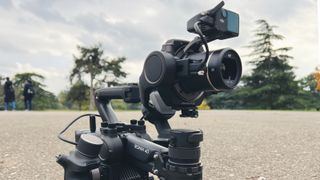
Over the past 15 years, DJI has become instead good at serving filmmakers shoot beautifully calm video. IT's the world's biggest drone stigmatise, and also makes useful little cameras like the DJI Air hole 2. But what it hasn't yet done is take on the likes of Canon or Sony in ground-supported professional cameras. You saw it coming though, didn't you? The Ronin 4D is where this changes.
The Ronin 4D is mid-range professional person movie house tv camera, with an symmetrical lense and 4-axis stabilization, that has the oft-used 'game-record changer' label written all over it. Given that information technology's been co-developed with some of the worldwide's leading cinematographers, it looks and sounds like something that filmmakers should be excited about. As a writer and manager, that includes me.
Luckily, I was lately given the chance to bring out the 6K version of DJI's new chockful-frame toy for a spin. And after a day's filming, I'm convinced it's going to beryllium big deal for filmmakers and low-budget productions. Here's why it's the Hollywood Steadicam for (nearly) everyone.
- These are the foremost video cameras you potty bargain starboard now
Swanning around
It's consequential to say this upfront; out of the box, there is cypher like the DJI Ronin 4D. Nothing. It's squarish body is fairly comparable to cameras like a Coloured or an Arri Alexa, but it's the mobile arm that holds the sensor and bounces up and down in foremost that gives information technology a unique, black swan-similar appearance. IT really is something to behold.
As a author, director and only part-time camera-op, I instantly knew that to get the most out of this thing, I was active to have to enlist the help of DOP (Director of Photography) extraordinaire, Ciaran O'Brien (look him up, He's a genius). Like any cinematographer, Ciaran is always neat to pay back his hands on new tech and jumped at the chance. A man of fewer (but very considered words), he "ooh-ed" and "ahh-ed" the first time atomic number 2 saw the Ronin 4D, which goes some way to separate you just how different this thing is.
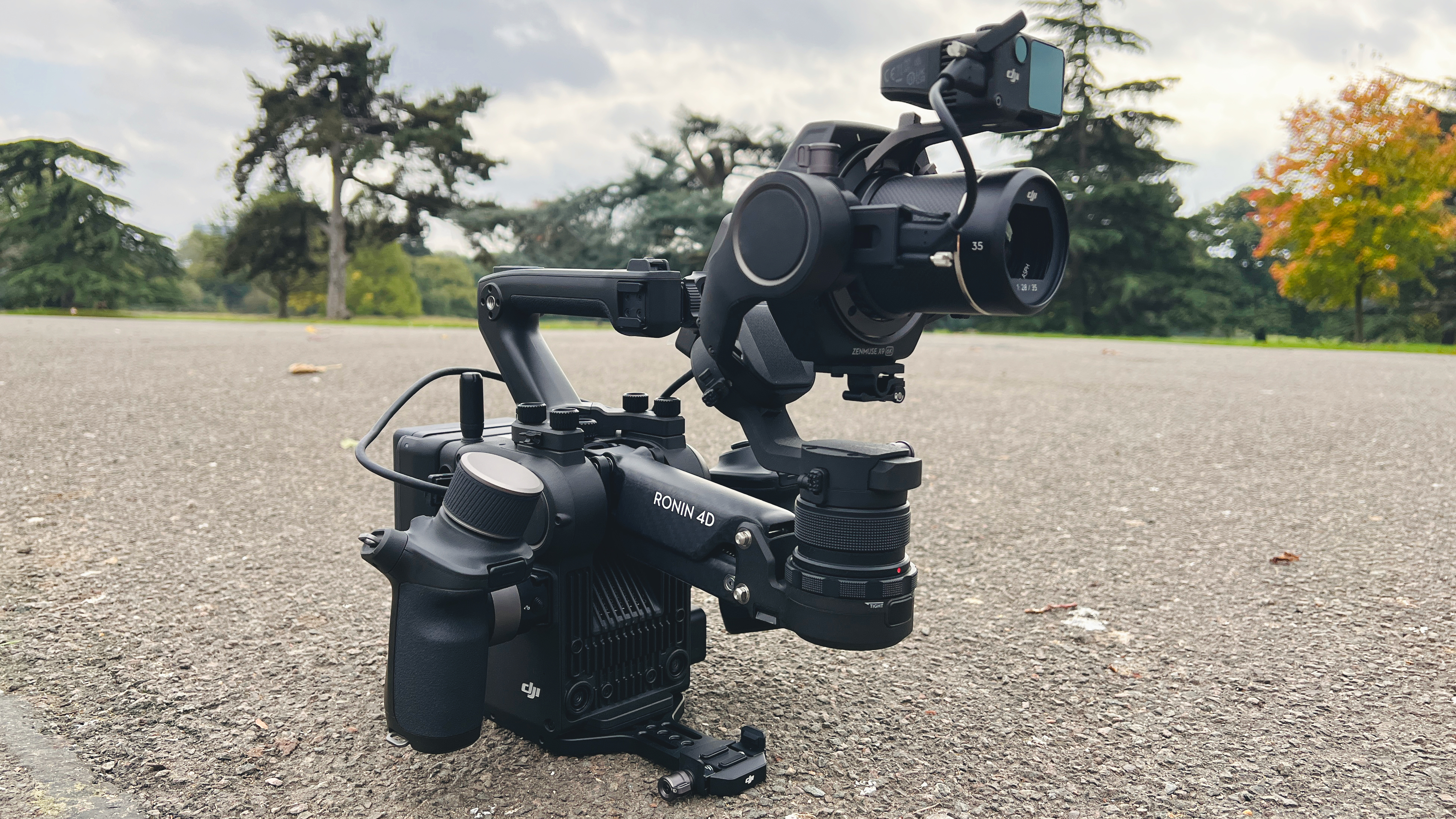
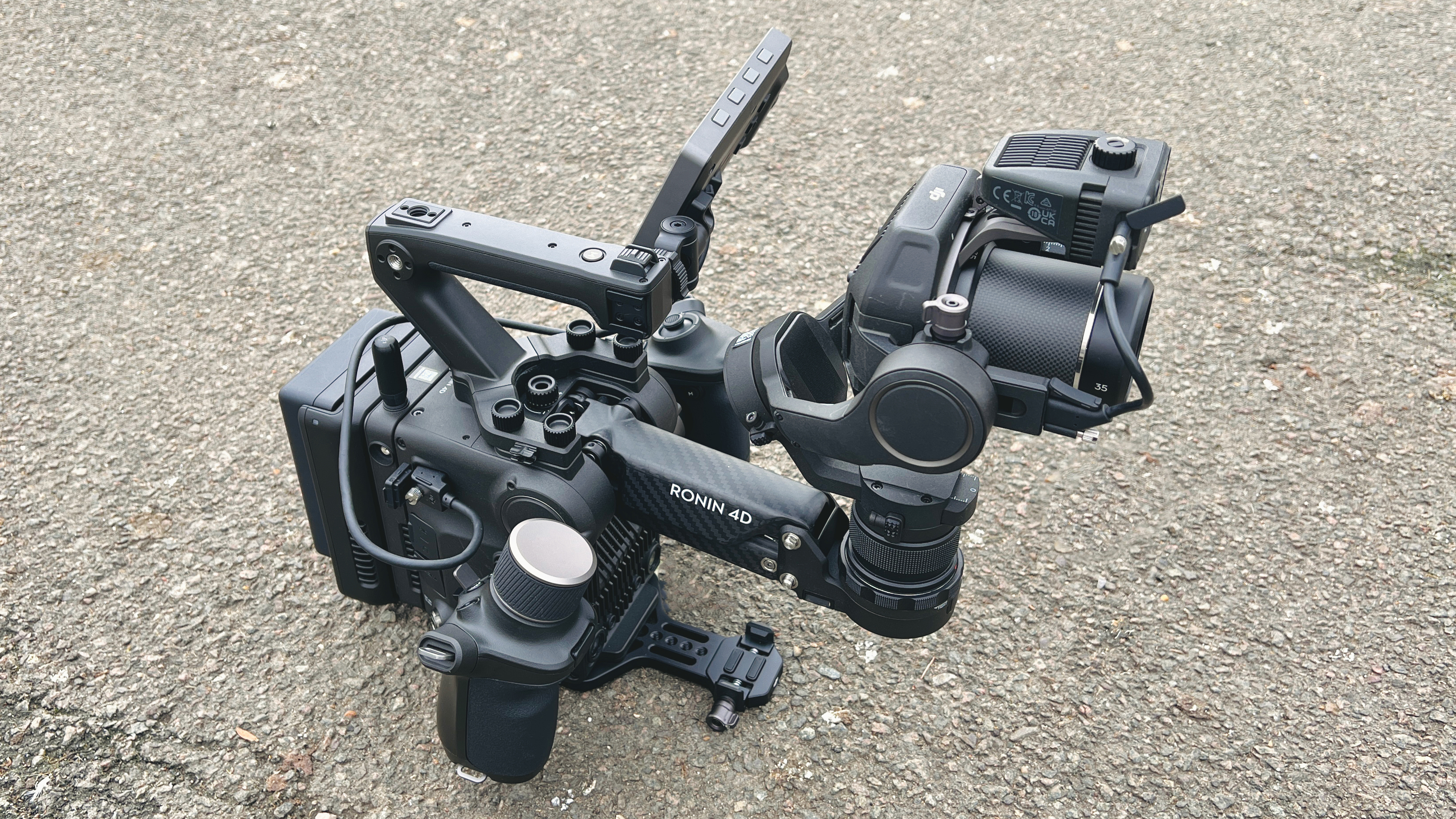
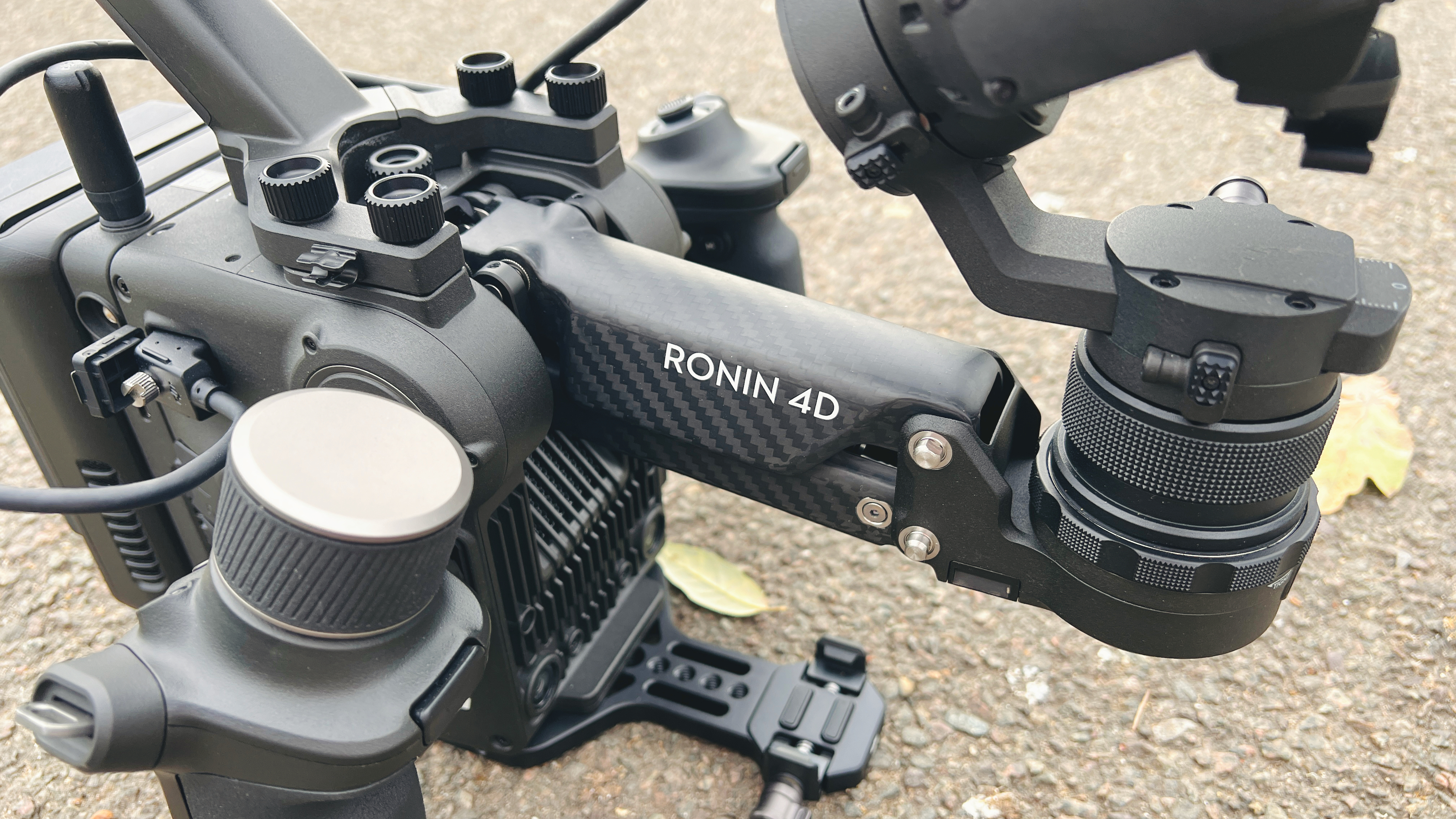
For operators who spend their days using heavy, ill-chosen stabilizing equipment, this is a total no-brainer; information technology could potentially make unnecessary a lot of hind pain in the film industry.
Like a sho, don't get me erroneous, part of me thinks the aim of the 4D is going to split opinion. Some are going to love its young play camera design and the implementation of the stabilization tech. Others are plainly not going to entertain it. They'll consider it as a gimmick and will be happy to stick to their Canons, REDs and Arris.
The ergonomics are initially unusual, simply once you use the thing for more than five minutes, they make total sentience. This is a tv camera that's in the first place intentional to be held. You can bolt deuce multi-functional 'grips' onto either side of the body and berth it in front of you. You operate on it at chest of drawers operating room midriff summit, as opposed to on the shoulder, like about every other camera in that category. For operators that drop their years using heavy, cumbersome stabilizing equipment, this seems like a tot up no-brainer; it could potentially salve a lot of back hurting in the screenland.
The grips that attach to to the body are well designed and feel good in the hand. There are various buttons and controls that allow you to operate the key settings at your fingertips. Cardinal grip comes with a wheel that you operate with your thumb. It's beautifully designed and weighted and is great for manually controlling focus, but derriere also be customized.
- DJI Mavic 3 Pro release date, price, rumors and what we deprivation to see
Multidimensional fun
The headline feature of the Ronin 4D is just what the '4D' refers to, and that's the stabilization of the Z-axis. Or more specifically, what DJI refers to A "the industry's forward active-consolidation 4-axis stabilization system".
What does that mean? On a regular hand-held DJI stabilizer (former brands are disposable), the system counter-balances the camera's pan, tilt and roll movements with electronically-controlled motors. But something that isn't properly accounted for in this set-up is the up-and-down motion that's created aside the operator when they walk, jog Oregon run.
Patc three-axis stabilizers give you footage that is far smoother than simply holding a camera in your custody, the up-down motion of the operator still has an result. By stabilising this motion with some downward-facing sensors that inflect the floating arm holding the camera, the DJI Ronin 4D gives you an extra horizontal surface of stabilization that is somewhat incredible. You end up with something that is happening a par with a fully-vaned Steadicam scheme – the Hollywood occupation's go-to superior of camera helpful equipment.
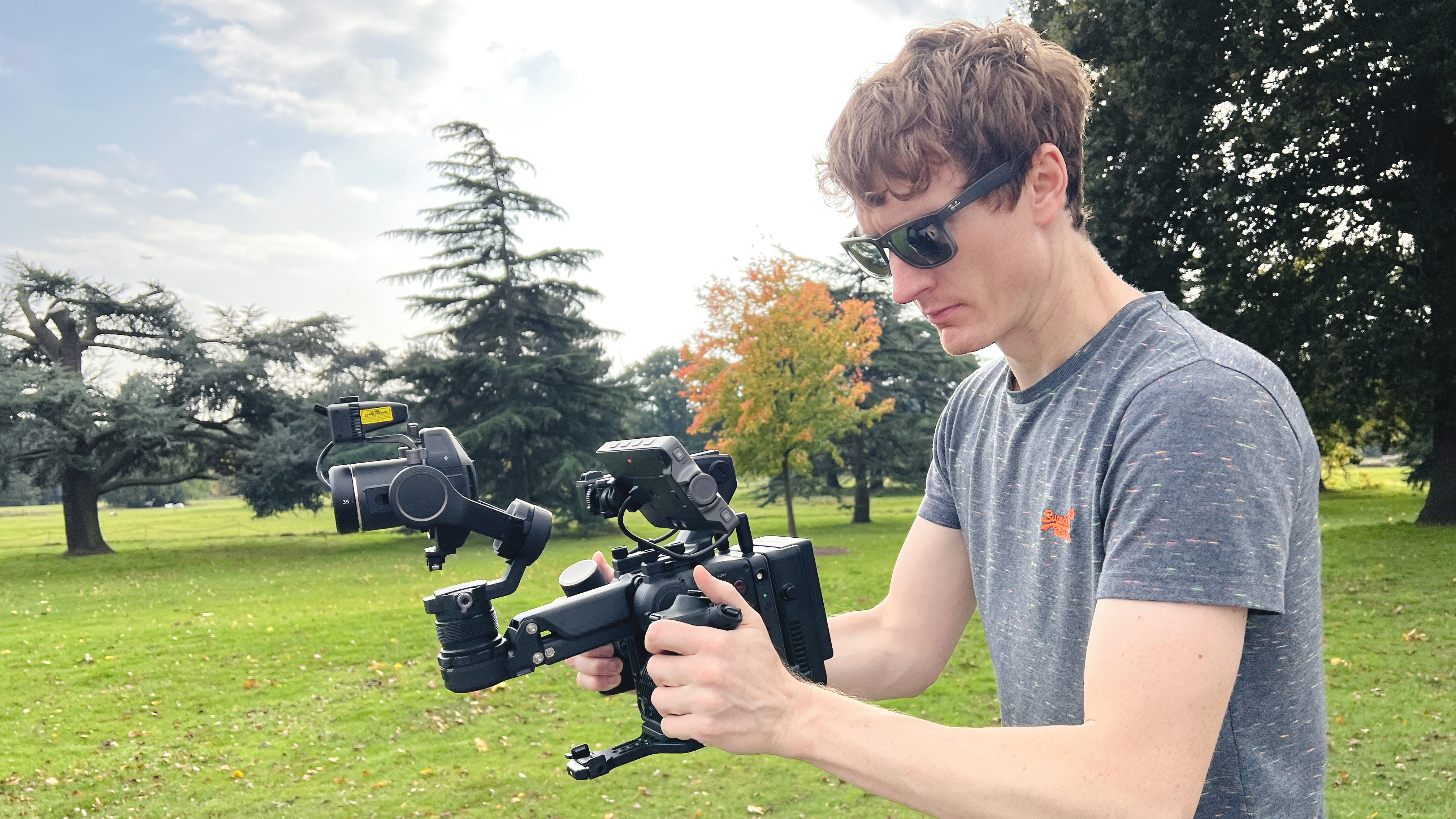

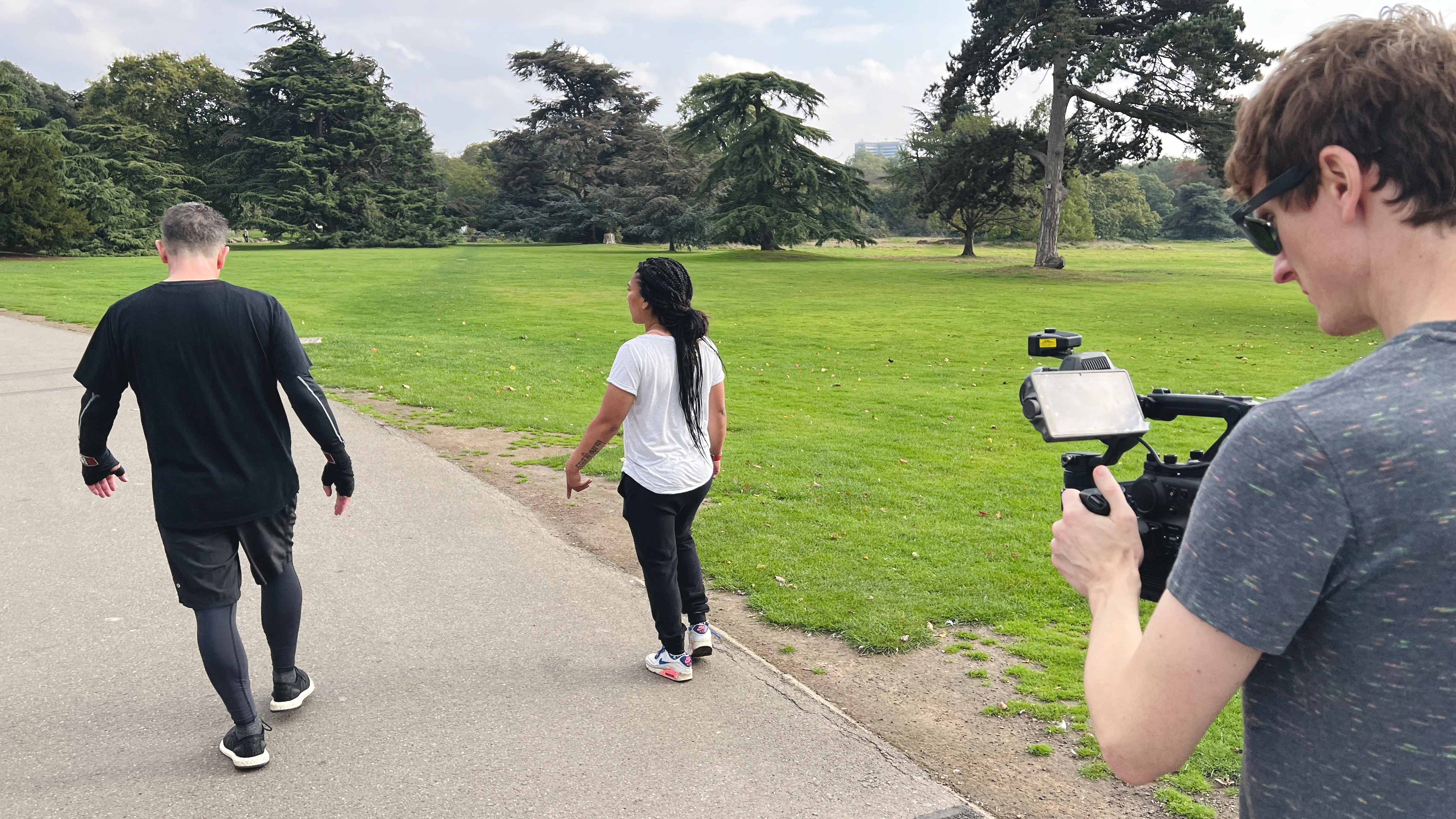
When I watched Ciaran O'Brien habit it for the first time, I was astonished at the footage that we watched backwards. Merely he's being doing stuff like this for a age and knows how to go with a stable camera; and this is an strategic point.
The Ronin 4D ISN't something that anyone can receive and use to create a Michael Bay-esque action sequence (you should e'er concentrate on story and quality earlier, anyway). There's noneffervescent an element of know-how and accomplishment to get the most tabu of it. Take focusing, for instance; focusing with a camera that's moving at footstep is an art physique in itself, and it's something that, on some line shoot, would Be confiscate to a dedicated person in the tv camera department.
In my hands, the footage wasn't closely as good – and I've been victimisation cameras for nearly 15 years now. Ciaran was very polite, but I knew that inside, atomic number 2's ne'er going to ask me to film anything for him. What I will say, though, is that the 4D notwithstandin upped my game in terms of the footage I was able to cause, and I throughly enjoyed the operating go through.
Another big Ronin 4D feature is the LiDAR autofocus, which is essentially a laser-guided focus tracking system. Our tests found information technology to be good, but not perfect.
It did seem comparable a step up in terms of the various autofocusing systems that are out in that respect, and it's almost certainly something that you're going to rely along if you're operating without a dedicated focus-tugger. Peculiarly if your manual focusing skills are as average A mine. But we're placid not in a world where business DOP's are passing to trust an electronic organisation for focus. The reason existence, whatever drop in focus on a big output could cost you much of money and annoy a mint of the cast and crew.
The final matter worth mentioning is the Ronin 4D's tune monitoring system, which will ejaculate at an additional cost. It's brilliant. IT's simple to set up and it just works. A corresponding radiocommunication setup on a camera system like this usually requires third-party accessories and they can be a trifle nature and refractory at times. The DJI system was perfect – and brilliantly, you buns control the tv camera remotely with the monitor.
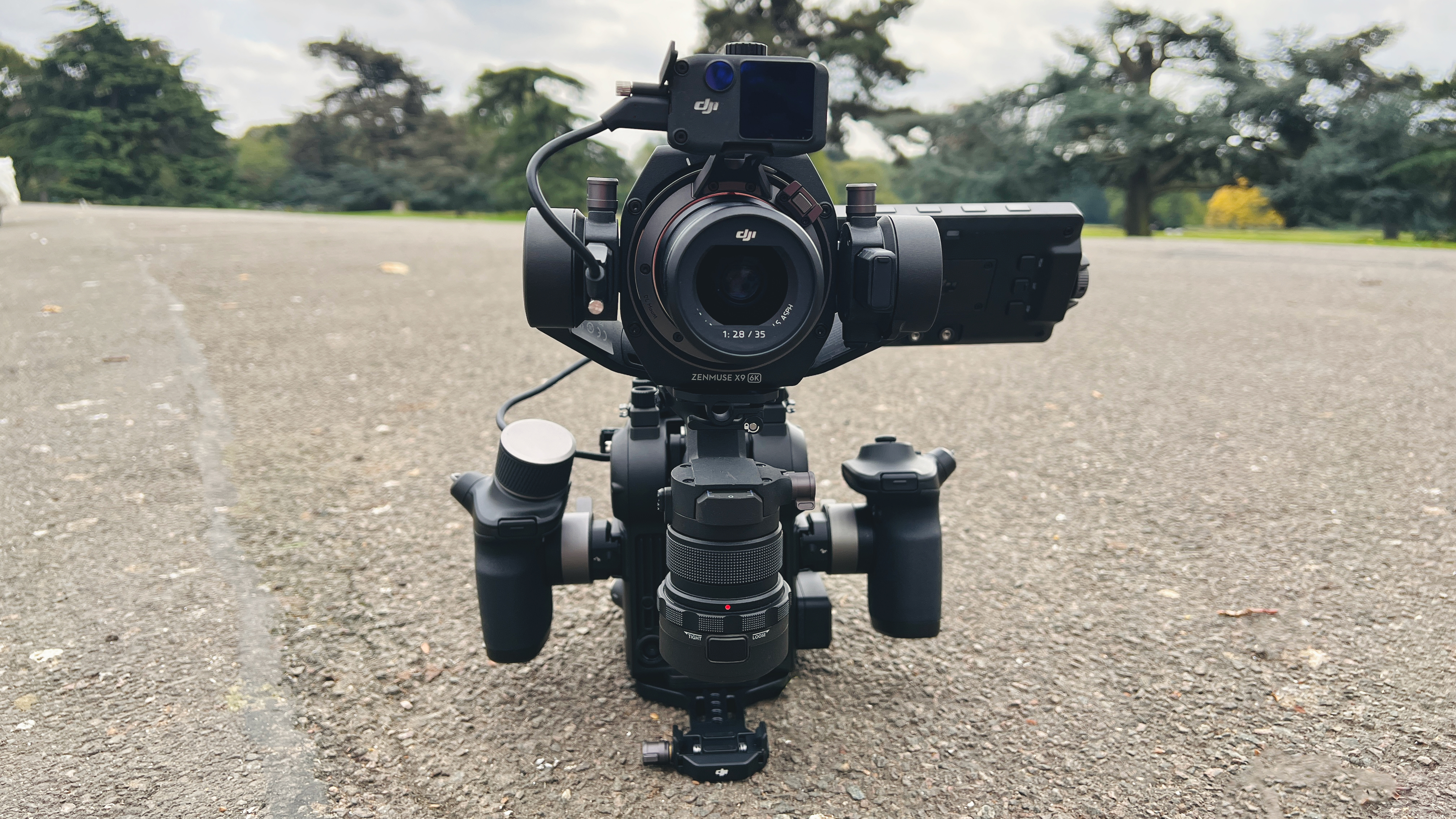
The aforementioned grips tail end be engaged to the side of the monitor, gift some other phallus of the camera team control over au fon all of the major camera settings. This is where your focus puller will thank you, as they sit John L. H. Down (finished to 20,000 feet away, if needed) and effortlessly clout focus without having to flow from roughly close to you.
Other points to highlight are all to be hoped-for at this level. The Dual ISO, 14 stops of dynamic range, and stacked-in ND filters are forever welcome – some comparable systems have this, some Don't. There's no important sound inputs on the camera body itself (it has a built-in mic, but this volition solitary of all time be useful for reference audio). However, you can add XLR connections with an expansion home base. Something that self-shooters will make to do.
A leap forrad
So the DJI Ronin 4D is a unique camera, merely how good is its image quality? This is where DJI has taken another big leap gardant.
Over the years I've owned few bits of DJI kit that I've forever enjoyed using, but have always questioned the paradigm quality of the ones with a built-in camera or Lens. You've typically been hamstrung by little sensors and video codecs that leave you with footage that is launch deficient.
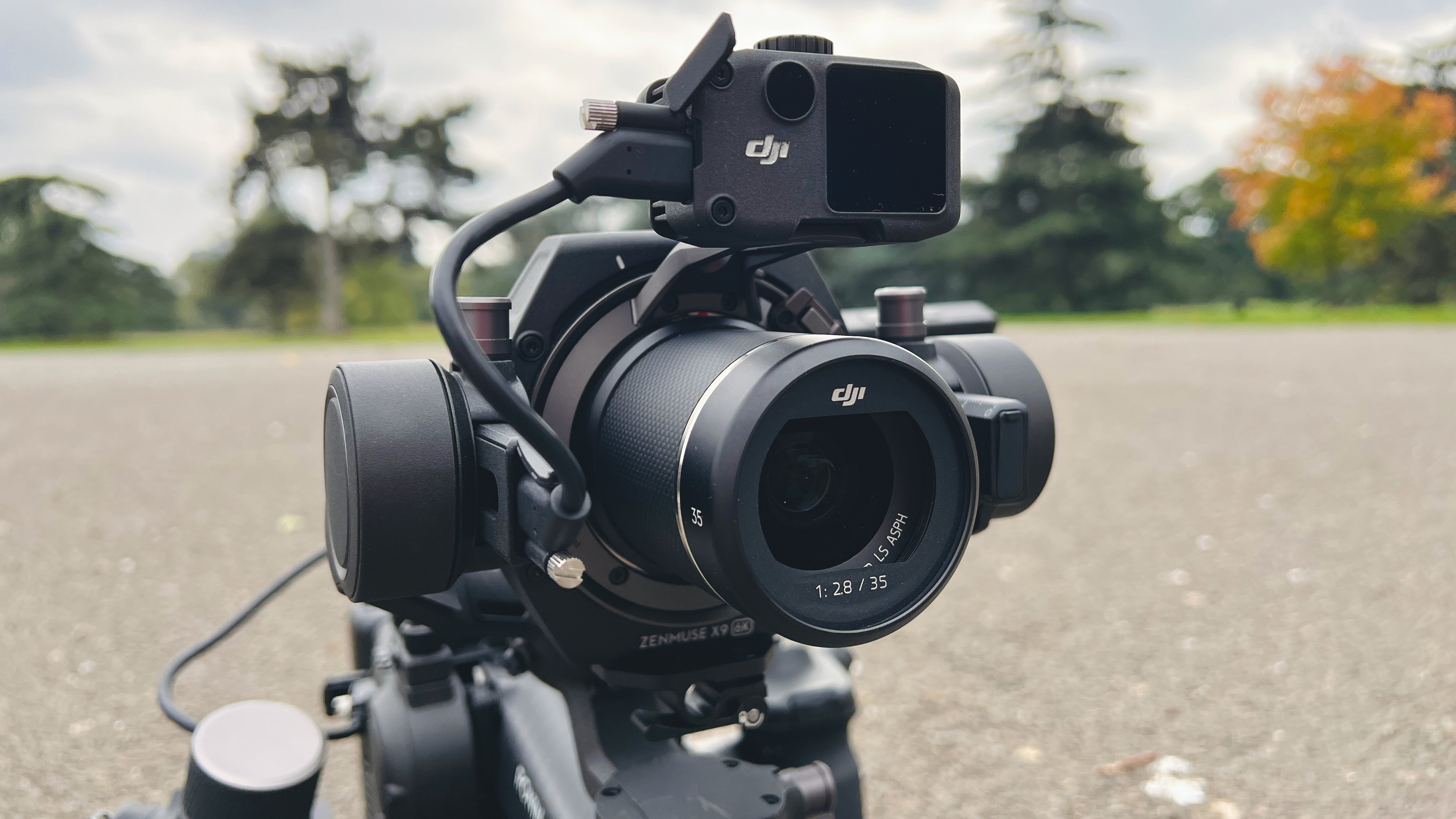
Hera, things are different. At that place's the choice of a 6K Oregon 8K full-frame sensor. My preference is the 6K one for a couple of reasons; better soft light performance, smaller, more manageable file sizes, and cost.
The mount lets you attach some of your preferred lenses of choice (it's compatible with ones for DJI's DL Mount, Leica's M Mount and Sony's E-Mount), and at that place's the ability to record in Apple's ProRes codec internally, including ProRes RAW. This gives filmmakers far more scope for image manipulation in post-production than other DJI cameras.
What was once just available to productions with five, six or seven-fancy budgets, is now accessible to budding filmmakers and low-budget productions.
Blend all of these elements and you've got a recipe for some potentially exceptional telecasting quality, albeit at the cost of massive amounts of disc space and the need for a fair sum of money of processing power. There aren't many redaction machines outgoing on that point that can plow multiple streams of 8K ProRes. On the store front, to pay you an idea, a minute of ProRes HQ video in 8K is going to require about 25GB-30GB of disk space.
High-ticket buy
On that point's nobelium doubt around it – the DJI Ronin 4D is an exciting entry into the world of cinema cameras. IT's bold, antithetical and produces imagery that no more other camera in this category can, or certainly not without additional third-party equipment.
Like the camera, the cost is also a welcome surprise. The 6K version is very aggressively priced at $7,199 / £5,999 / AU$10,699. When we inaugural got our hands on the Ronin 4D, I mentioned that I'd be surprised if it was much below £10k – so the idea of profitable nearly half that makes IT a very, very tempting proposal.
The 8K version is by nature a bit pricier at $11,499 / £9,499 / AU$16,399 – it mightiness not valid like a bargain, simply this still represents good value for money in my eyes. Though I'd be happy to BIN the supererogatory resolution and apply the money salvageable to buy up few add-ons ilk the XLR expansion plate, a few much batteries and some memory card game.

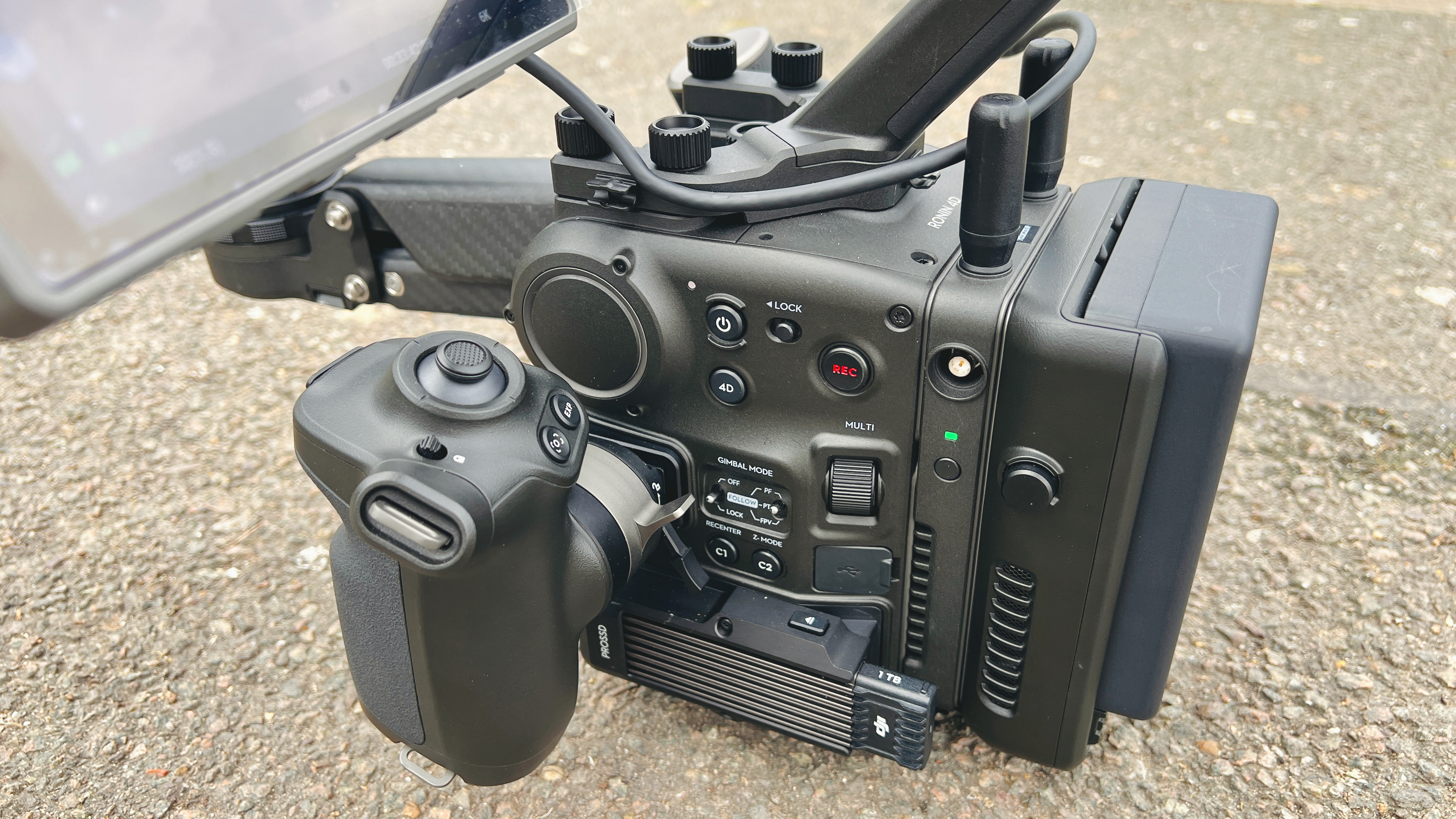

DJI has produced something that wish make grab attention and challenge the likes of Sony and Canon, who currently own the introduction-level cinema television camera marketplace. What was once only available to productions with five, hexa or seven-figure budgets, is at present accessible to undeveloped filmmakers and depression-budget productions.
The 4D's implementation of Z-axis stabilization technology, American Samoa well as the imagery, ergonomics and user experience is genuinely brilliant. It makes you rethink what's possible in footing of the shots that you can achieve, and I bum't wait to realize what young, hungry and more creative people than me do with it.
- These are the best DJI drones you can buy right wing now
I spent a day with the DJI Ronin 4D – and it took my filmmaking to the next level
Source: https://www.techradar.com/news/i-spent-a-day-with-the-dji-ronin-4d-and-it-took-my-filmmaking-to-the-next-level

Posting Komentar untuk "I spent a day with the DJI Ronin 4D – and it took my filmmaking to the next level"